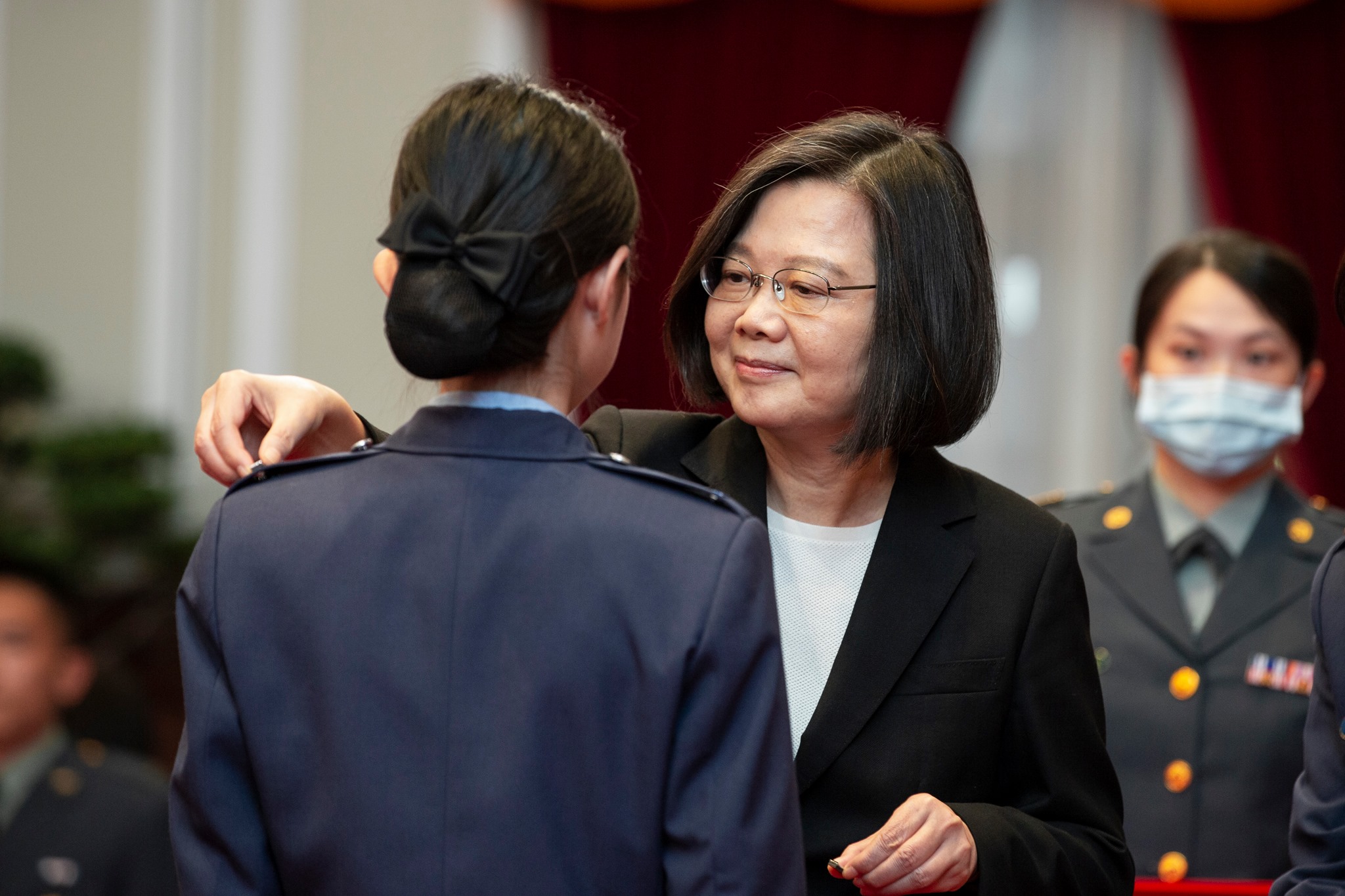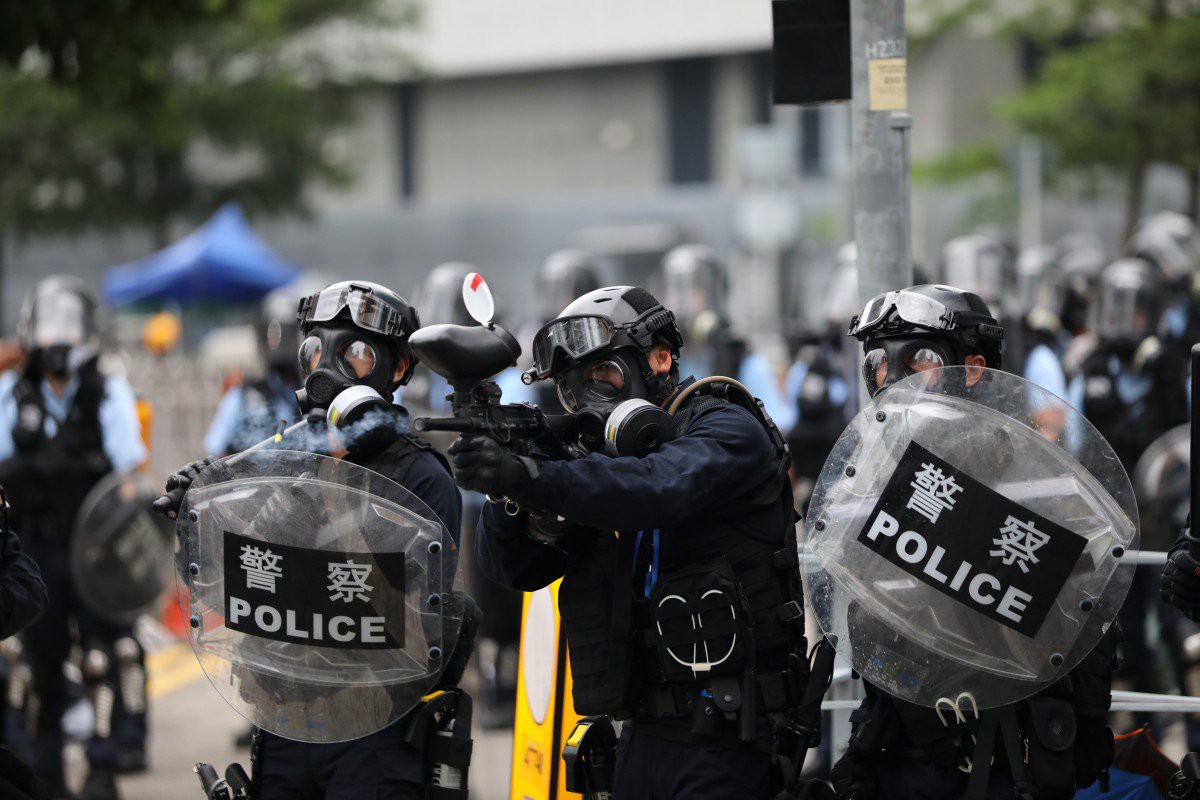With the DPP controlling the legislature, Taiwan could finally succeed in setting defense spending at 3% of GDP, something that hasn’t occurred since 1999. But will that be enough to ensure it can defend itself? A look at the Ministry of National Defense’s latest QDR.
Taiwan will increase defense spending to nearly 3% of GDP and acquire a series of new capabilities to deter China, Ministry of National Defense (MND) officials told the legislature upon the release of the ministry’s Quadrennial Defense Review (QDR) on Thursday.
Mandated by the National Defense Act, the QDR provides an update on military readiness, planning and strategy, and must be made available within 10 months of a presidential inauguration.
Defense spending has been well below the targeted 3% of GDP since 2008 and stood at NT$355.7 billion (US$11.6 billion), or 2.05% of GDP, in 2016. According to the Stockholm International Peace Research Institute, the last time Taiwan’s defense spending accounted for 3% of GDP was in 1999 (during the 1980s it was above 5% of GDP). By comparison, China’s official defense budget last year stood at 954.35 billion yuan (US$138.4 billion), with an expected increase of 7% for 2017, or about 1.3% of GDP.
Among other things, MND officials told the legislature that the ministry intends to acquire or develop a fifth-generation aircraft with vertical takeoff and landing capability (akin to the Lockheed Martin F-35), continue development, with foreign assistance, of an indigenous attack submarine, bolster air defense systems (including road-mobile launchers), upgrade surface combatants, develop and deploy smart sea mines, and create a fleet of unmanned aerial vehicles (UAV) for both reconnaissance and offensive (“counterforce”) operations. A cyber warfare unit is also expected to be established in the second half of this year to help defend the nation’s C4ISR and other key infrastructure against cyber attacks.
Taiwan relies on a “solid defense and a multi-layered deterrent” strategy to counter the People’s Liberation Army (PLA) should China decide to use force against the island-nation. Notwithstanding the primarily passive nature of its defenses, Taiwan’s deterrence capabilities have increasingly relied on counterforce (or “counterstrike”) capabilities, meaning the ability to use offensive technology — land- and air-launched missiles among them — to attack targets in China, including naval, air, missile, army, and radar bases.
PLA bases that would play a role during operations in the Taiwan Strait are located within a radius of 250 km to 1,380 km from Taiwan. The PLA’s Eastern Theater Command, located in Nanjing, would conceivably be the main base of operations in a Taiwan contingency.
The Tsai Ing-wen administration enjoys a majority of seats in the Legislative Yuan, which should limit the ability of the opposition Kuomintang (KMT) to block or stall the passage of budgets, as it did during the Chen Shui-bian (2000-2008) years. Whether the stipulated budget will be sufficient to ensure the realization of all the projects enumerated in the QDR (the indigenous defense submarine program alone is expected to cost taxpayers a very conservative US$12 billion over a decade for eight to 10 ships) at a time when Taiwan continues to strive to create an all-volunteer force remains to be seen. Although President Tsai has prioritized the domestic defense industry, development costs for major endeavors such as the IDS and a fifth-generation aircraft can be daunting, and some of the technology required to make these projects possible isn’t available to Taiwan. Additionally, while foreign procurement (almost exclusively from the United States) can be expensive, the political value attached to arms purchases as an indicator of continued U.S. support for Taiwan cannot be discounted and will therefore ensure that Taiwan continues to purchase arms from the U.S., even on occasions when it would be more cost effective to develop them domestically.
Other options
Besides arms purchases and development, Taiwan could increase its deterrent by better integrating the region and encouraging its principal security allies — the U.S. and Japan — to more clearly state their red lines, including a signalling to Beijing that offensive military operations against Taiwan would prompt a commensurate response. After decades of “strategic ambiguity” that succeeded in keeping Beijing guessing, the PLA’s capabilities and ability to project power are now such that decision makers in Beijing could, under certain circumstances, convince themselves of the feasibility of achieving a quick and “clean” military victory against Taiwan, particularly so if the Chinese leadership operates under the belief that the U.S. (or Japan) will not intervene. Clear signals of a “tripwire” involving both the United States and Japan and extending beyond a military response by those two partners could therefore lower the risks that China would regard the military option as a viable one.
A global public diplomacy (propaganda) campaign that internationalizes the conflict should also be part of the non-military aspects of Taiwan’s deterrence strategy. Taipei could do a lot more to explain why it is in the interest of the international community for Taiwan to remain independent; additionally, it should seek ways to guarantee a diplomatic and economic backlash among members of the community of nations should China attempt to seize Taiwan by force.
You might also like
More from Cross-Strait
Taiwanese Celebrities Who Bow to China: A Tempest in a Teapot
Taiwanese entertainers Ouyang Nana and Angela Chang have sparked controversy in Taiwan over news that they will perform at China’s …
In Memoriam: Lee Teng-Hui and the Democracy That He Built
The former president of Taiwan is the incontestable refutation of the belief that history is merely an impersonal force, that …
The Making of ‘Insidious Power: How China Undermines Global Democracy’
A new book released on July 30 takes a close look at the agencies and mechanisms of CCP 'sharp power' …









